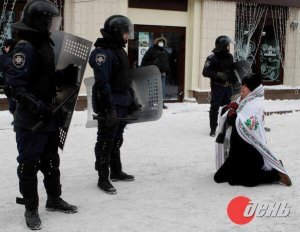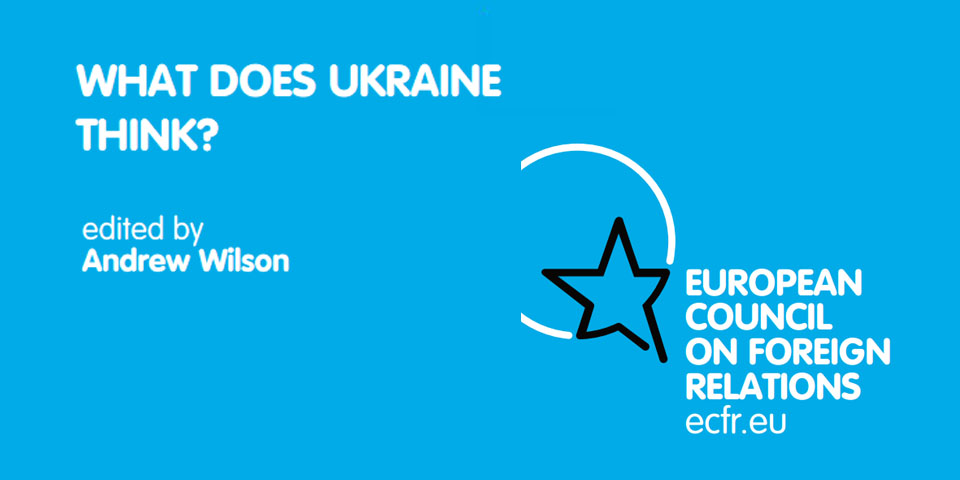
The task of changing what hundreds of thousands of citizens in Ukraine find to be a corrupt, authoritarian regime into a country where a simple, comfortable life is possible for everyone is one that has daunted Ukrainians for many years, but especially so during the years of current President Viktor Yanukovych. Those that oppose the government face persecution – any excuse for a jail sentence. Among the first and most public examples is the imprisonment of his political rival and former Ukrainian Prime Minister Yulia Tymoshenko.
But there is power in numbers. In just over two months, the ongoing anti-government Euromaidan protests pushing back against Yanukovych and other corrupt leaders have evolved into a full-fledged, self-financed organization – a self-organized government of its own. Ilya Varlamov, a popular Russian blogger, who traveled to Kyiv in January to report on Euromaidan for his blog, describes how the movement is run in what he calls a Virtual tour of Maidan:
“It has its own army, storehouses with weapons (glass bottles, sticks, stones) and food, it has its own internal press, stores, and, of course, Maidan protects its own boundaries very well. All the approaches are reliably protected from assault by high barricades”.
While standing up to the regime as an individual seldom makes a difference, Ukrainians now know that standing up as a group does. kraplya.com, a project that has grown out of the Euromaidan movement, takes a look at that very aspect of the protests (kraplya means “drop” in Ukrainian).The project’s official website makes it clear: “Alone, we are just drops; together, we are an ocean.”
The people who gather on the streets to protest each day are the drops from all over Ukraine that have made this ocean, now visible to the world, possible. Some have been living in the streets by choice for more than two months. Some come to join them after work or other daily errands. Artist Oleksandr Komyakhov has drawn portraits of some of them.
Sister of mercy
 In her hands she carries bags full of medicine. The woman represents the many people who have brought the movement much-needed medical supplies. The Berkut special riot police often break ribs, bones and leave other injuries, while activists living in the frozen streets, and some of them for months now, at times need treatment.
In her hands she carries bags full of medicine. The woman represents the many people who have brought the movement much-needed medical supplies. The Berkut special riot police often break ribs, bones and leave other injuries, while activists living in the frozen streets, and some of them for months now, at times need treatment.The Euromaidan SOS Facebook page publishes hourly updates on the needs of Euromaidan protesters. The medicine brought to the protests is sorted by hundreds of volunteers every day. The Maidaners organized their own hospital and equipped it well enough to function and serve at a regional level, crowdfunding even defibrillators and other surgical equipment. They have a real need for such equipment as activists are being kidnapped from official hospitals by police forces, so protesters have decided it’s best not to show up there.
Wealthy terrorist
Not long ago, now former Prime Minister Mykola Azarov made a statement referring to the protesters at Euromaidan as “terrorists”.
 In a story told by Andriy Priymachenko, the man on the right is is the sarcastically dubbed “wealthy terrorist”. He brings tires in his expensive car to the boys at the “frontline” between the protesters and the Berkut militia:
In a story told by Andriy Priymachenko, the man on the right is is the sarcastically dubbed “wealthy terrorist”. He brings tires in his expensive car to the boys at the “frontline” between the protesters and the Berkut militia:“January 22. Around 23:00.
A white off-road Lexus is parking in the middle of the European square. The driver, a 50 year-old man, goes to the back of the car and searches for boys going to the frontline in the crowd.
– Guys, give me a hand!
A group of boys in masks immediately run up to him. All have helmets on their heads. The Lexuses [sic] owner takes his expensive leather gloves off, opens the trunk, and unloads tires. The boys ask no extra questions, take the tires and start carrying them in the direction of the frontline. Finally the driver takes a dark-green canister with fuel out of the trunk.
– This goes also there. Well, you’ll figure it out.”
Berkut snipers have killed several protesters so far. A smoke curtain created by burning tires, put up by Euromaidan protesters, seems to have put an end to that. Thousands of tires, brought by thousands of cars, driven by thousands of people.
Other items that Maidan is constantly in need of come in the same way: clothes, food, firewood, computers, blankets, sleeping bags, helmets, gas masks, protective gear, even books for the library that has now been organised for the protester’s needs.
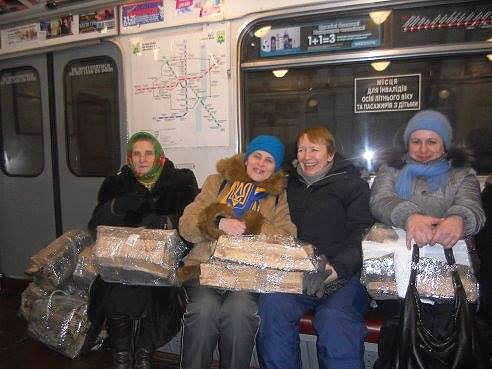
Recently, police cut off access for large trucks carrying firewood to Maidan, but the little drops that are the protesters bring them to the main protest site on the subway.
Auntie Valya
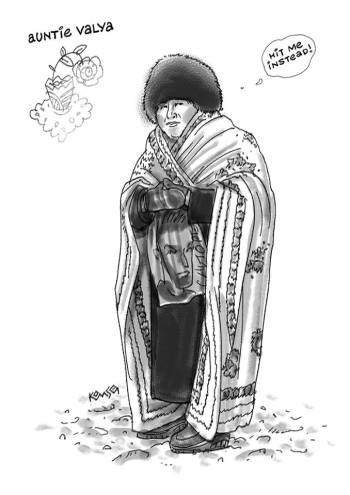
Speaking of such “terrorists”, they seem to come in all ages – and police forces don’t seem to discriminate. Twitter user bruce springnote tweeted the apparent mishandling of this elderly Euromaidan protester:
When Daryna Shevchenko saw the evening news,she wrote on Facebook:
“This is my neighbor auntie Valya. Yesterday she was shot with a rubber bullet in her leg, but she came again. And today, when the berkuters were “killing a 86-year-old grandfather”, filming their “amusement” and heehawing, she fell to her knees and asked them to stop or at least to kill her instead of him. They did that, but, thanks to God, did not kill her. Beat her ribs with sticks and heehawed again and were very interested “So it’s not enough for you, bitch!??”
The Gammy
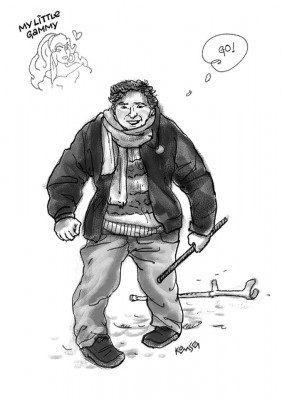
Maidan’s drops come in all sizes, varieties, and physical abilities. Some protesters with disabilities have abandoned their crutches and taken sticks in their hands, while people in wheelchairs are busy clearing snow.

People with other disabilities, such as blind people serving sandwiches, have also been of help to the movement.
The Ant

One of Euromaidan’s participants, “The Ant”. Drawing by Oleksandr Komyakhov, used with permission
Snow is a valuable resource. It is shoveled into sacks, carried by many hands over to the barricades, where the sacks are stacked like enormous bricks, then poured over with water, making a frozen wall that is almost impossible to pass.
Moscow deputy bureau chief for The Wall Street Journal and Maidan correspondent James Marson tweeted his observation:
Water cements the stacks and makes a solid wall up to 4-5 meters in height. Thus, Maidan is circled by a defensive wall like a medieval city and well protected. The wall prevent attacks from the Berkut forces who are constantly expected to come armed with water cannons, tear gas, clubs, and shields.
Artist Oleksandr Komyakhov is regularly updating his collection of portraits of drops that make up Euromaidan. His full gallery of Euromaidan participants can be viewed on his Facebook page.
Originally written by Alya Shandra for Global Voices



